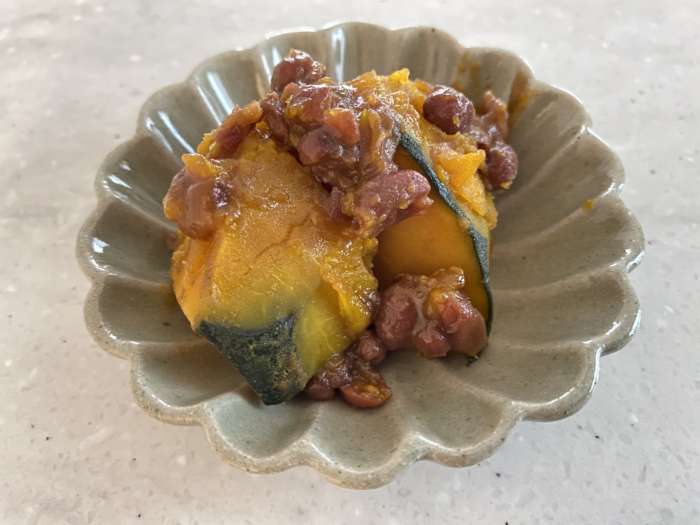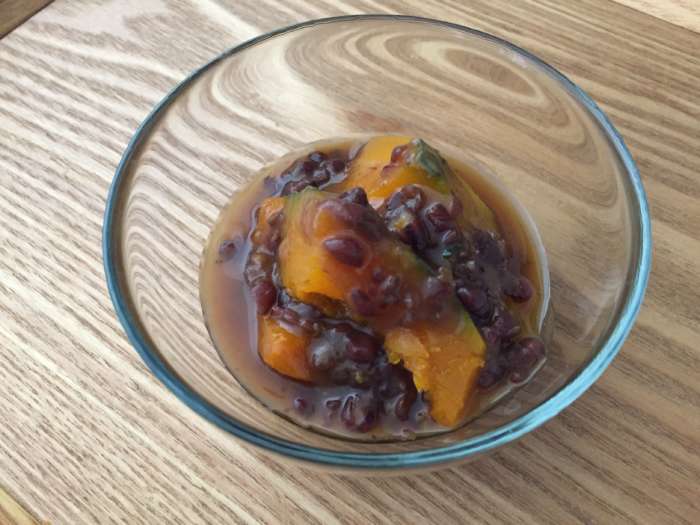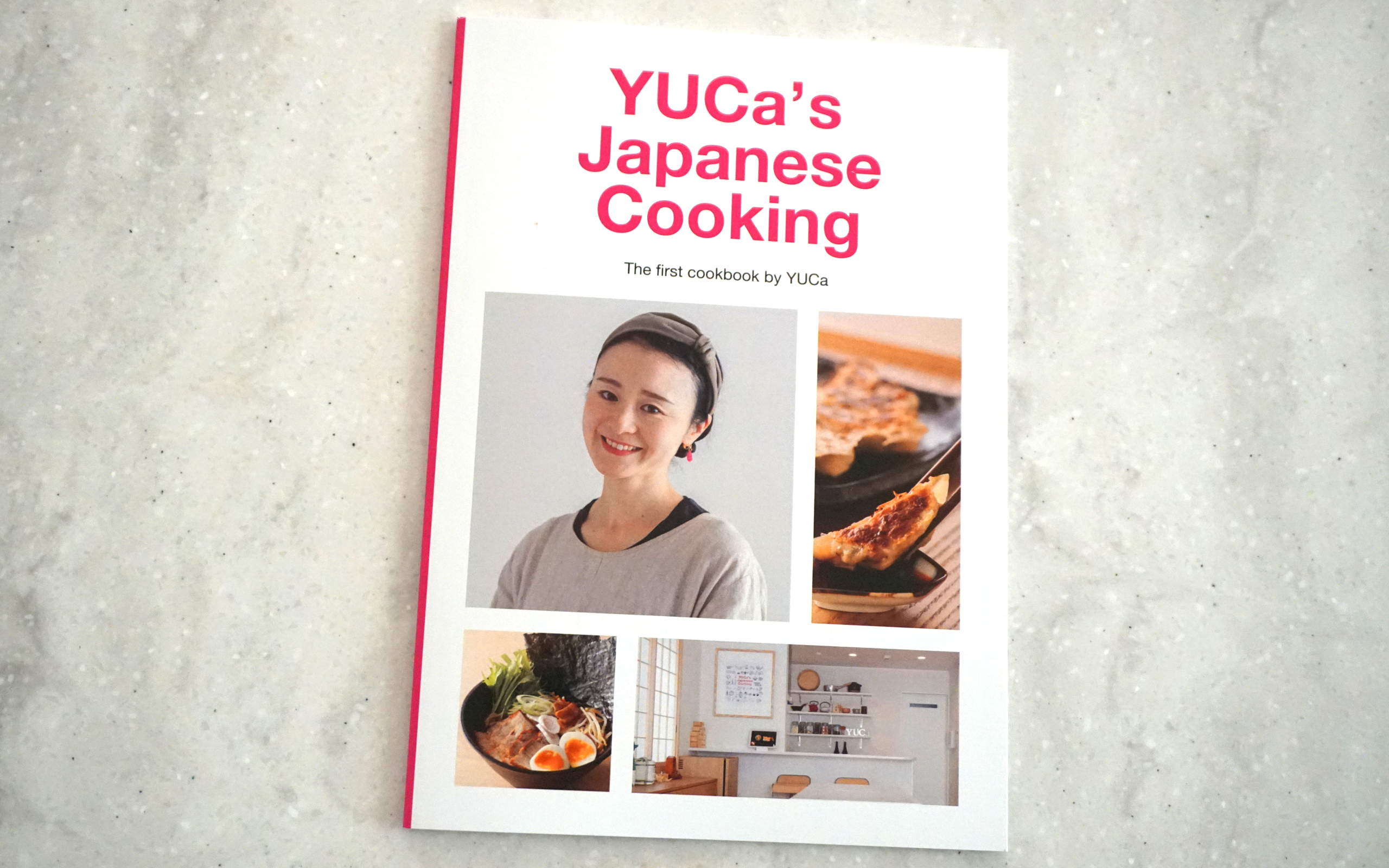Recipe : Simmered pumpkin with red beans

This Japanese vegan side dish is called “kabocha no Itoko-ni” (かぼちゃのいとこ煮) in Japanese.
“Itoko-ni” is a sweet and salty simmered root vegetable and azuki beans that are eaten as local dishes in the Hokuriku region including Toyama prefecture, Nara prefecture, and Yamaguchi prefecture.
It started with a collection of boiled ingredients offered to God, and was originally eaten during Obon, New Year, and festivals. It is still enjoyed by ordinary households, and it is often eaten with cousins during local celebrations.











